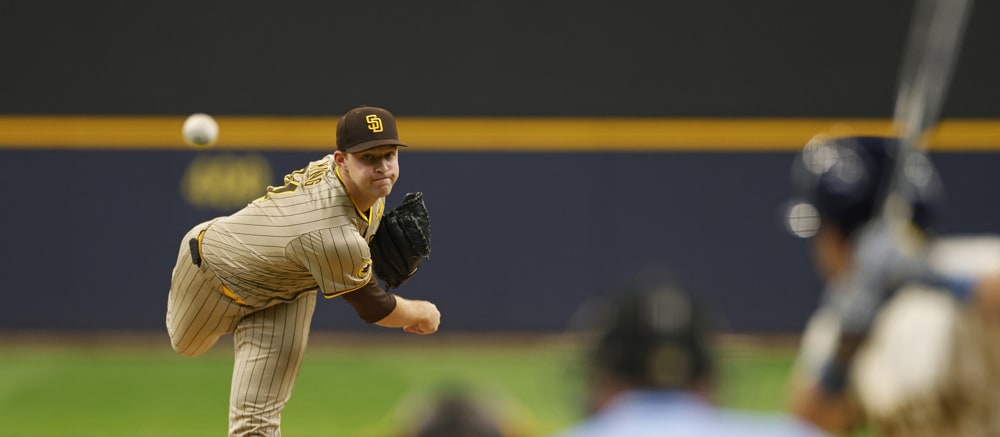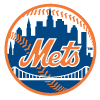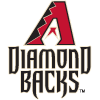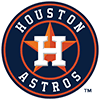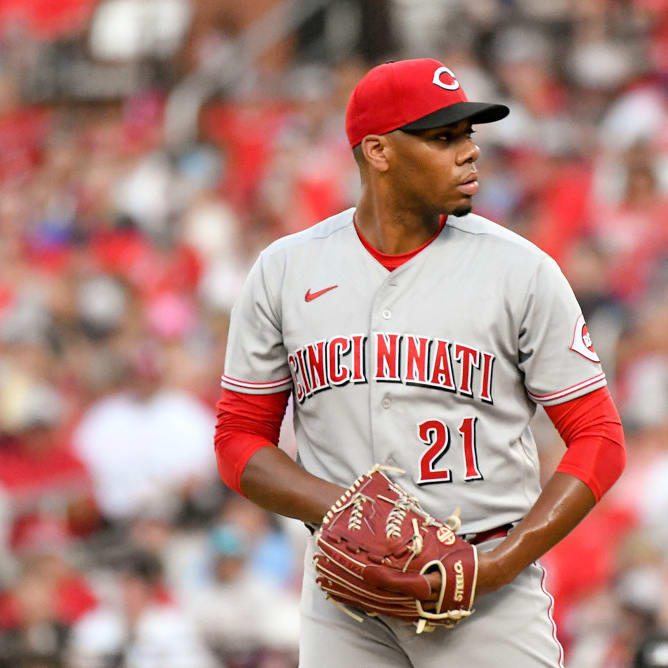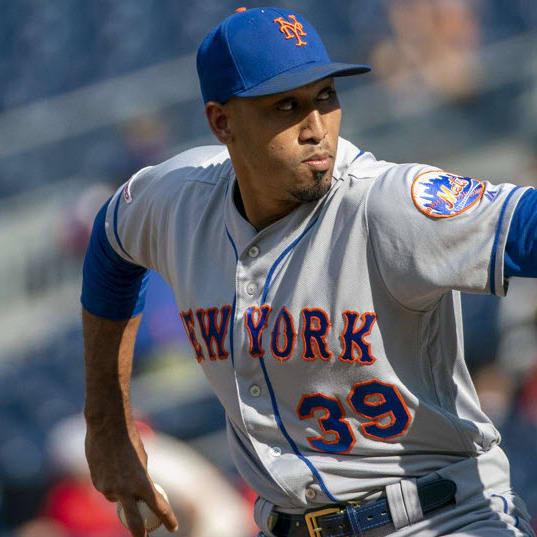We're well past the halfway post in most points league formats, but the All-Star break still offers a good time to reset for the stretch run. We've used the last few weeks of this column to look back, but now it's time to look forward. This article will highlight three hitters and three pitchers that will be particularly compelling to follow in the second half.
Hitters
Bichette has been a significant disappointment this season, and his evaluation for the second half comes down to two things. The first is his skills profile, which surprisingly remains largely intact from his more productive campaigns. For example, his swing decisions remain within tenths of a percentage point of their career norms, and his strikeout and walk rates are also within their normal range. Similarly, there's nothing alarming about his flyball-to-groundball ratio. What has faltered is his barrel rate and hard contact rate. For a typical 26- to 27-year-old player, that profile translates into a pretty easy call to buy low. In most cases, we shouldn't expect a player to simply lose the ability to hit the ball hard. Bichette is a particularly compelling and true buy-low because fantasy managers have increasingly benched and even cut him from rosters.
The factor that should raise a red flag regarding a confident buy-low call is Bichette's history of injuries, both in the short and long term. Since the start of the 2023 season, he has documented injuries to his knee, quad and calf. The
We're well past the halfway post in most points league formats, but the All-Star break still offers a good time to reset for the stretch run. We've used the last few weeks of this column to look back, but now it's time to look forward. This article will highlight three hitters and three pitchers that will be particularly compelling to follow in the second half.
Hitters
Bichette has been a significant disappointment this season, and his evaluation for the second half comes down to two things. The first is his skills profile, which surprisingly remains largely intact from his more productive campaigns. For example, his swing decisions remain within tenths of a percentage point of their career norms, and his strikeout and walk rates are also within their normal range. Similarly, there's nothing alarming about his flyball-to-groundball ratio. What has faltered is his barrel rate and hard contact rate. For a typical 26- to 27-year-old player, that profile translates into a pretty easy call to buy low. In most cases, we shouldn't expect a player to simply lose the ability to hit the ball hard. Bichette is a particularly compelling and true buy-low because fantasy managers have increasingly benched and even cut him from rosters.
The factor that should raise a red flag regarding a confident buy-low call is Bichette's history of injuries, both in the short and long term. Since the start of the 2023 season, he has documented injuries to his knee, quad and calf. The last of those has been particularly problematic this season, as he was on the injured list with the issue in June and reaggravated it just before the All-Star break.
Ultimately, I'd take a chance on Bichette's skill profile coming through in the second half, especially now that the price to acquire him should be minimal relative to his potential.
Ramos spent the first six weeks of the season in the minors but has been arguably the best post-hype producer since being called up by the Giants. Despite than a higher than desirable strikeout rate, Ramos has a decent skill profile for points leagues due to his track record of consistently working walks and hitting for considerable power throughout his minor league career. That hadn't translated in the majors previously in small samples.
That brings us to the first change in his profile: opportunity. The Giants had been hesitant to keep Ramos in the lineup regularly early in his career, but he has been a near-everyday player since May 10 – a stretch that began primarily due to the team's shortage of healthy players in the outfield. Thanks to his outstanding his performance, he's now a consistent presence in the top-third of San Francisco's lineup, another factor to boost his value in points formats.
How he's gotten his results and whether he can keep it up are tied together. Ramos has seen a very high rate of fastballs and has made elite swing decisions, attacking pitches inside the zone particularly aggressively. Pitchers weren't previously compelled to gameplan specifically for Ramos, but given his tear in the first half there's reason to believe that will change. Whether he can adjust to pitcher's adjustments will be the key to his sustainability, but as the numbers currently stand, Ramos looks to be a legitimate breakout.
Vientos' ability to hit for power is no surprise as he was given above-average power tool grades as a prospect and posted .238 and .306 ISOs in the Triple-A as a 21 and 22-year-old, respectively. The question was whether he'd make enough contact to translate that power to the majors. So far, the answer has been a resounding yes. His 24.6 percent strikeout rate is nearly the lowest of his career, regardless of level.
Most importantly, it appears that the adjustment from pitchers referred to for Ramos has already come for Vientos, as opposing pitchers have attacked him aggressively with sliders (35%). There's downside for his strikeout rate to tick back up based on his overall contact rate (69.2%) and swinging strike rate (15.8%), but if he can keep the status quo he's worthy of consideration as a top-10 pick at third base next season.
Honorable Mention: Jarren Duran  – Duran was mentioned in the first-half MVPs article from three weeks ago, but his performance this season has been among the most compelling of all players regardless of league format.
– Duran was mentioned in the first-half MVPs article from three weeks ago, but his performance this season has been among the most compelling of all players regardless of league format.
Pitchers
Pfaadt's perception in fantasy circles has risen and fallen in extreme ways across the last two seasons. He disappointed during the regular season in 2023, primarily due to a problem giving up home runs. Pfaadt then proceeded to impress in the playoffs, playing a key role in Arizona's improbable run to the World Series. His 2024 season has been a combination of those levels of performance, as he has a far improved ERA (3.97) but still hasn't had overwhelming fantasy success.
The positive is that Pfaadt has controlled the most important things during his 209.1 innings in the majors. He's maintained a near identical K-BB% (16.5%) throughout that sample and has shown glimpses of being able to limit home runs more effectively this season (1.10 HR/9, 0 HR across 10.1 innings in July) both through a decreased flyball and barrel rate. The makings of a very good fantasy starter are here, the pieces just need to come together. Pfaadt could be a big riser in the second half of the season.
King was a very popular player to discuss during draft season after he closed the 2023 campaign in strong form as a starter with the Yankees. He was simultaneously a draft darling and a popular bust prediction around the industry. The latter group seemed to be on the right side of things through his first seven starts of the season, as he posted a 5.00 ERA and 1.47 WHIP.
Yet, since the start of May, King has maintained a 2.64 ERA and 1.12 WHIP. The under the hood numbers are even better, as he's cut his BB% to below seven percent while keeping his strikeout rate around 30 percent – elite numbers for a starting pitcher. Put another way, in 14 starts since May 4, King has delivered fewer than 13 fantasy points only three times. King has solidified himself as a legitimate SP2 in points leagues but doesn't seem to be getting his due.
Brown's story is very similar to that of King. He struggled to find his velocity to begin the season and had two high-profile blowups in early April, during which he combined to allow 14 earned runs across only 3.2 innings. That's enough to make even the most patient fantasy managers consider a spite cut, but in the last two months, he has regained his velocity and his results.
He's been a bit more uneven than King with his points output and peripherals, so he's not quite as clear of an evaluation. That makes him a compelling watch, as he could solidify himself as a reliable starter or fade back into an intriguing pitcher who has been unable to deliver consistent production.
